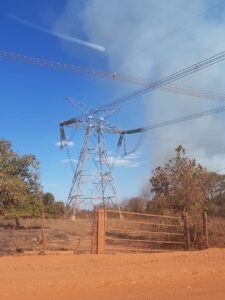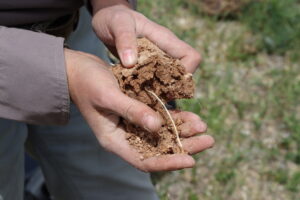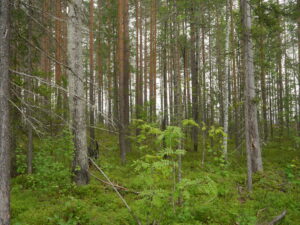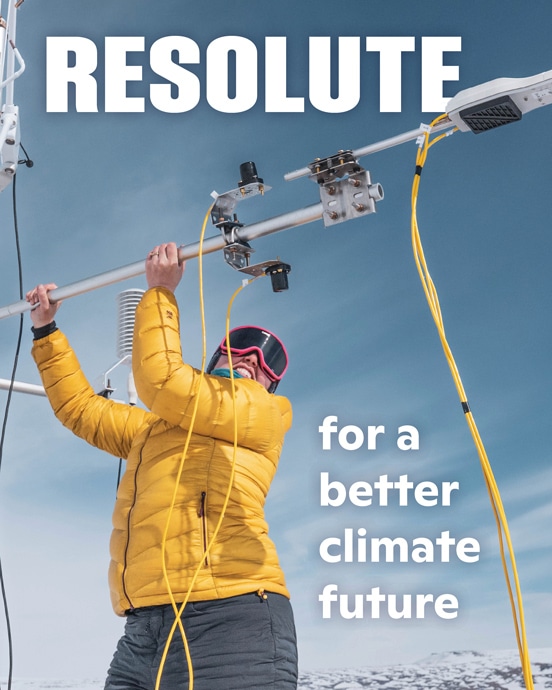If the summer of 2023 felt abnormally hot to you, that’s because it was. With heat waves making headlines month after month, this year saw a spike in temperatures that broke global records.
September 2023 followed in the footsteps of both August and July as the hottest each month has been since temperature record-keeping began, making the late summer of 2023 Earth’s hottest yet. Here’s how 2023’s sweltering heat compares to past years:
- Global average surface air temperature reached a record high in the summer of 2023.
- July 24th, 2022 was the hottest day of last year, at 62.5 degrees F.
- July 3rd, 2023 was the first day that was hotter than the hottest day in 2022.
- July 6th, 2023 was Earth’s hottest day on record.
- 42 days this year were hotter than the hottest day in 2022.
Record-breaking heat in 2023
In North America alone, 78 all time records for hottest temperature were broken over the course of June, July and August. In New Iberia, Louisiana, the temperature record was broken four times, peaking at 109 degrees F. Places as far north as Wainwright Airport in Alaska saw temperatures as high as 84 degrees.
Humidity makes the heat deadly
Extreme heat events like these present a serious danger to human health. That threat is multiplied when instances of high temperature coincide with high humidity— interrupting the ability of the human body to cool off through evaporating sweat. A recent paper, co-authored by Woodwell Climate Risk Program director, Dr. Christopher Schwalm, defines “lethal heat” as a wet bulb temperature (a measure combining heat and humidity) of 35 degrees C (95 degrees F). Prolonged exposure— over 6 hours— to temperatures exceeding this can result in death even for a healthy person keeping hydrated in the shade
According to the paper, instances of deadly heat waves are increasing with climate change. Already, with over a degree of warming, parts of Northern India are seeing annual heat events. By just two degrees of warming— a milestone we are currently on track to hit by mid-century— a quarter of the world is expected to experience a lethal heat event at least once in a decade. A significant subset of the world, particularly regions of India, Africa, South America, and the Southeastern US, can expect deadly heat conditions at least once a year at that point, and the area will expand wider with each half degree of warming.
It’s a forecast that highlights the urgency of acting to mitigate warming and developing local and regional strategies to prepare communities to handle high heat and humidity events when they do come.
“It puts this past year’s heat waves into somber perspective,” says Dr. Schwalm. “Without action, we put a lot more, potentially billions, of people at risk of heat stress or death on an annual basis. It’s a significant public health concern.”
Record-breaking wildfires blanket Brazil with smoke
The blazes comes on top of a drought that has left some river communities stranded.

A record-breaking number of wildfires are blanketing the Amazon with smoke, choking some Brazilian cities and further isolating many Indigenous villages. Over 2,700 wildfires have been reported in the region in the first 11 days of the month — the highest number for any October since 1998, when the record-keeping began.
Air quality became so poor last week in places like Manaus that officials had to postpone the city’s annual marathon, and major universities canceled classes. Philip Fearnside, research professor at the National Institute for Research in Amazonia, said hospitals in the city are full of people who are having respiratory issues. “That should be a wake up call to actually change government policies and individual behavior to actually contain global warming,” he said.
World breaches key 1.5C warming mark for record number of days

The world is breaching a key warming threshold at a rate that has scientists concerned, a BBC analysis has found.
On about a third of days in 2023, the average global temperature was at least 1.5C higher than pre-industrial levels.
Staying below that marker long-term is widely considered crucial to avoid the most damaging impacts of climate change.
But 2023 is “on track” to be the hottest year on record, and 2024 could be hotter.
On September 27th, Woodwell Climate scientists and policy experts from the Center for Climate and Security (CCS) conducted a briefing on climate security risks in Iran and Türkiye. The presentation, hosted in the Capitol, drew in a crowd of interested congressional staffers to learn more about the relationship between the worsening climate crisis and national security issues.
This was the second of two such collaborative briefings, following a presentation to members of executive branch agencies, including the State Department, Department of Defense, US Institute of Peace, National Intelligence Council, and the Special Presidential Envoy for Climate, earlier in the month. Alex Naegele, a postdoctoral researcher with the Climate Risk Program at Woodwell, presented the results of two risk analyses produced in collaboration with CCS. The analyses used model projections to examine the impacts of climate change on rainfall, water scarcity, and wildfire.
Security experts from CCS— Tom Ellison, Elsa Barron, and Brigitte Hugh— then provided insight into political and social issues in both countries that intersect with climate risks, creating potentially destabilizing effects. In Türkiye, for example, diminishing water resources have the potential to create cross-boundary conflicts if it’s perceived by downstream countries to be “hoarding” water for its own citizens.
The briefing was highly attended by congressional staff across the political spectrum from 27 different House and Senate offices.
“The congressional crowd can be different and you never know exactly what you’re going to get,” says Woodwell External Affairs Manager Andrew Condia. “But you could just tell by the questions, and sort of the attention to the presentation that this was a very relevant and interesting topic across the board. It was a much more bipartisan turnout than I was expecting.”
That turnout speaks to the broad interest in how climate change represents a growing threat to national security interests. By speaking on climate through a security lens, Woodwell scientists are able to broaden interest and attention on climate issues throughout various branches of the federal government.
“Through this collaboration with CCS, we’re able to use our science and forward-looking approach to highlight specific climate risks to the security community. It’s something that’s not widely practiced and it’s a unique position to be in,” says Naegele.
Woodwell and CCS are looking forward to expanding the scope of future climate security case studies to draw links between the impacts of climate change and disruption to other countries or even other social systems.
“It would be interesting to apply this same thinking to an analysis of a certain theme instead of country. Perhaps examining impacts on supply chains or food systems,” says Ellison. “There’s a ton of issues we’ve barely scratched the surface on.”
Understanding Arctic ecology and climate science

Dr. Susan Natali, Arctic program director and senior scientist at Woodwell Climate Research Center, discusses the effect of permafrost thaw and wildfires on northern ecosystems, the Arctic population, and the global climate. Esri scientist Dr. Sheridan Moore investigates how mapping and analytics are informing Arctic ecology and global climate action.
Listen on Esri & the Science of Where.
Lawrence Livermore grabs two spots in DOE’s Energy Earthshot program

Lawrence Livermore National Laboratory (LLNL) scientists will lead and co-lead projects in support of the Department of Energy’s (DOE) new Energy Earthshot program.
The Energy Earthshots Initiative calls for innovation and collaboration to tackle the toughest topics in energy-related research. In January, DOE announced Office of Science funding for the Energy Earthshot Research Centers (EERCs) — they will build off a concept the DOE successfully demonstrated in the previous Energy Frontier Research Centers (EFRCs) and the Scientific Discovery Through Advanced Computing (SciDAC) program. The new centers will support fundamental research to accelerate breakthroughs in support of the Energy Earthshots Initiative.
Read more on Lawrence Livermore National Laboratory.
NCCS hosts modeling analysis of carbon uptake by global boreal forests

According to NASA research, summer 2023 was Earth’s hottest since global records began in 1880. In this changing climate, the Arctic and boreal region is experiencing the strongest warming trends – close to four times the global average.
“This warming is having profound (often contrasting) impacts on the landscape and carbon cycle,” said Jennifer Watts, Assistant Scientist at Woodwell Climate Research Center in Falmouth, Massachusetts. For instance, “permafrost and seasonally frozen soils in this region hold more carbon than is currently in the entire atmosphere,” she said. As these soils thaw in warmer temperatures, solid carbon stored in them can become food for microbes and get converted into carbon dioxide or methane gas. “Adding these additional sources of carbon dioxide or methane into the atmosphere is very bad for our Earth because it further accelerates climate change, including the warming of Arctic-boreal regions,” Watts said.
Continue reading on NASA Center for Climate Simulation.




